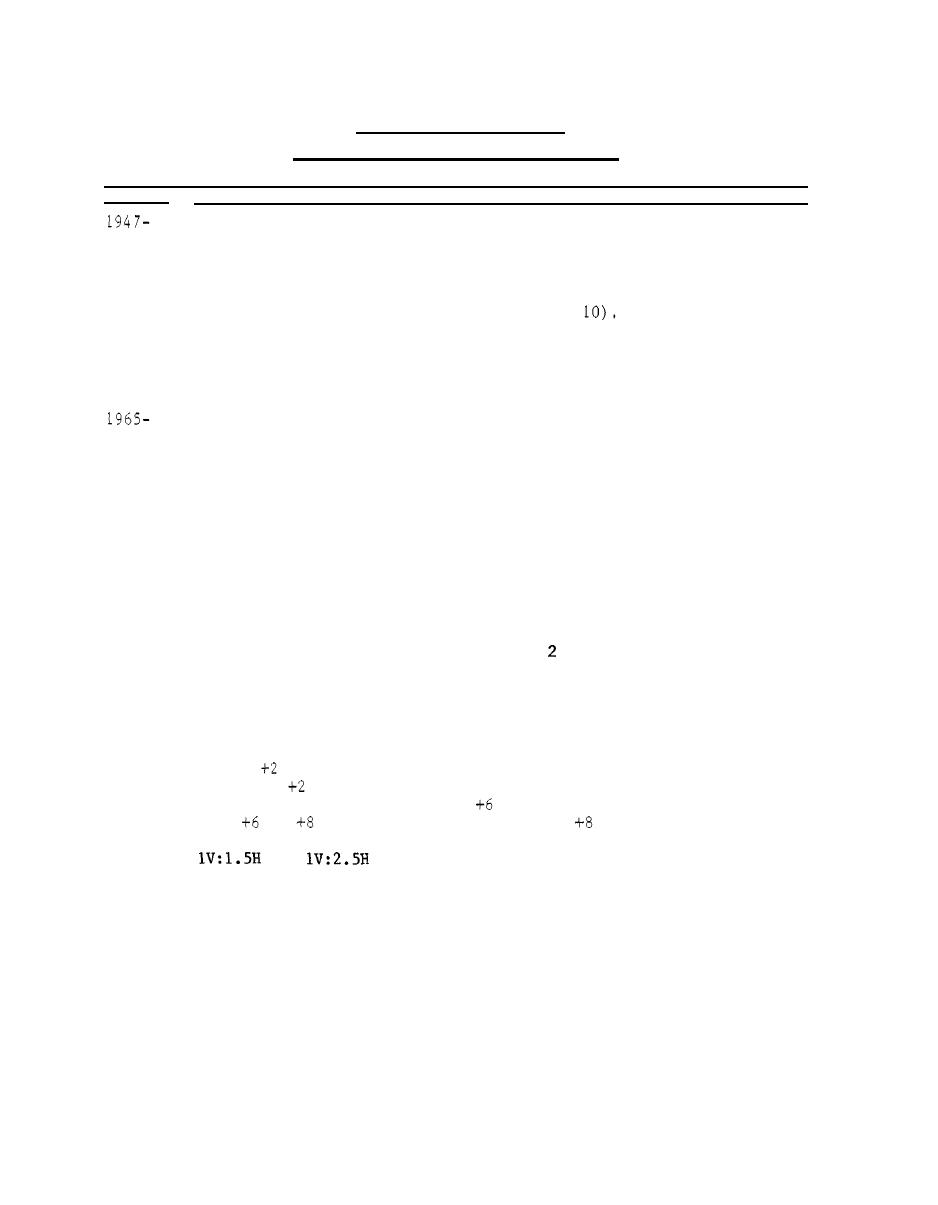
Table 7
Masonboro Inlet Jetties
Masonboro Inlet, North Carolina, SAW
Construction and Rehabilitation History
Date ( s )
In 1947 the district built two groins on the north shore. Shortly
1959
thereafter, three groins were constructed on the south shore, but
all five proved to be ineffective in maintaining a channel through
the inlet. In 1950 Congress authorized a channel 14 ft deep and
400 ft wide across the bar at Masonboro Inlet and dual jetties ex-
tending to the 14-ft depth contour (Figure
The jetties were to
be constructed only if it were found impracticable to maintain the
channel by dredging and if a study showed the jetties economically
justified. The ocean entrance channel through the inlet was com-
pleted in 1959.
Continued shoaling in the channel and attendant maintenance dredging
1966
problems led to a reactivation of the project's provisional jetties
feature. Because of the predominant southerly littoral drift, only
the north jetty was completed pending future evidence of the need
for a south jetty. In addition, the north jetty was designed as a
prototype sand-weir structure to add a sand-bypassing feature to the
overall navigation improvements. This was the first time that the
sand weir bypassing feature had been incorporated into a Corps of
Engineers (Corps) jetty design. The overall length of the jetty was
3,639 ft, consisting of 1,739 ft of concrete sheet pile and 1,900 ft
of rubble-mound on landward and seaward sections, respectively
The sections of sheet pile, 23.5 ft long by 3 ft wide
by 16 in. thick, were precast and prestressed with cables, and, once
placed, were interconnected with 12-in. treated timber wales. Sub-
sequent to completion of the jetty, several sections of the timber
wales came loose and required rebolting or removal from the sheet
pile. 520 lin ft of wales were removed. It was recommended that
any future designs were not to incorporate timber wales. The crest
elevation of the shoreward 600 ft of the sheet pile varied from
ft mlw, with the 1,100-ft weir section at a crest ele-
+12 to
vation of
ft mlw. The rubble-mound portion of the north jetty
ft mlw for 850 ft, a transition
had design crest elevations of
to
ft mlw for over 1 0 ft, and
0
ft mlw for the seaward
from
950 ft. The design crown width was 1 ft, and the side slopes were
0
and
for the trunk and head sections, respectively.
Capstone size ranged from 7 to 12 tons. Depth-limited design wave
heights of 8 and 12 ft were used with Hudson's stability equation to
select capstone for the trunk and head sections, respectively. The
jetty design included a deposition basin on the leeward side of, and
adjacent to, the weir- section. The basin would periodically be
dredged, with the material placed on the opposite shore as required.
(Continued)
(Sheet 1 of 4 )
20



 Previous Page
Previous Page
